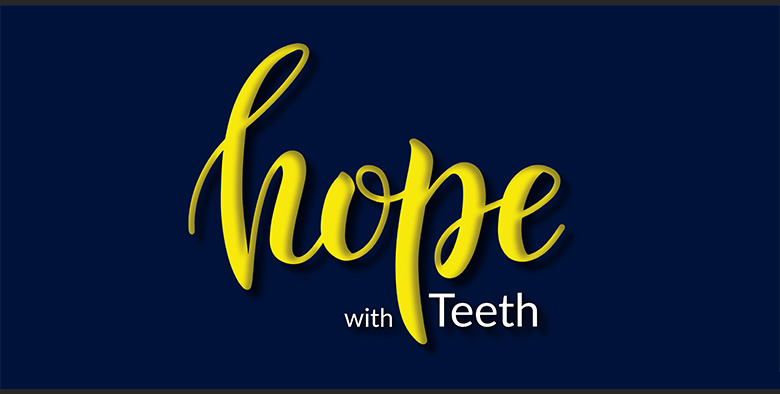
Journalists of faith, and faith-based news organizations, can often find themselves in a tough spot. On the one hand, their instinct (if not their mission) is to report critically on religious institutions and their leaders, shining a light on both right and wrongdoing. On the other, religious readers look to faith-based news as an antidote to what’s often superficial and sensationalistic, if not divisive, coverage by secular media.
Solutions journalism poses a path forward. It’s a way for journalists to examine their churches, and the issues informed by their faiths, with a lens that’s analytical and fact-based but informed by aspiration. It can heighten the accountability of people in power without leading to more cynicism within and more demonizing from outside a faith community.
Solutions journalism is rigorous reporting on the responses to social challenges. A solutions story asks and answers four questions: What is the solution being proposed? What evidence backs up the claim? What are the limitations of the solution? How do we replicate/spread/grow it?
It’s a more complete approach to reporting. A solutions journalism lens elevates a superficial story about a church’s food pantry, for example, and uses it to examine the broader need to tackle food insecurity. It takes a story about corruption and asks how the organization is making amends to those who were harmed.
Solutions journalism has been described as “hope with teeth.” Faith often helps people navigate the messy, tense areas of life. It helps them hold struggle and hope in tension and connects them to others. Faith communities need stories that not only reflect the reasons for their hope, but that advance their agency.
What solutions journalism isn’t
Fluff or promotional content. By demanding real evidence to back up claims and discussing the limitations of a solution, journalists protect against unrealistic coverage and flattery.
Religious groups have been taken advantage of by charlatans who exploit the trusting relationships within the group. We can protect our neighbors by carefully examining claims of success. As group members, we also want to be sure that the institutions that represent us are doing what they say they’re doing, and that the work done in our name is living up to its promises.
Heroism. Rarely is a solution scalable if it begins and ends with a single heroic person. Profiles and character driven stories need to connect to the larger source or motivation for the person’s heroic actions with a plan to spread that source and motivation to others.
We’ve seen the hazards of personality-driven movements, celebrity pastors, and misplaced trust. By moving away from hero-driven endeavors and toward community-wide solutions, we’re reminded that faith connects ordinary people to extraordinary aspiration.
Pie-in-the-sky concepts. Sure, we could solve all the world’s problems if we just gave everyone a million dollars and the fountain of eternal youth. But proposing those as solutions quickly bumps up against reality. To be a solutions story, we ask for evidence that something is working—which demonstrates that it’s possible!
Religion is often accused of being disconnected from or irrelevant to the problems people face. But people of faith know the real life impact of spirituality and often point to those real, experienced effects to support their continued devotion.
Proselytization or advocacy. A reporter’s job isn’t to convince anyone of anything, it’s to present the facts—including the philosophical framework for the solution—and to let readers decide how those facts speak to their personal beliefs. Your outlet may hold certain values and beliefs, but for it to be a solutions story, reporters should not be drawing broader “therefore” conclusions about values and beliefs from the solution. Leave the teaching and preaching to the teachers and preachers.
Bringing solutions journalism into your coverage
As a faith-based journalist, you’re probably already covering certain topics that could support a solutions lens. Let’s look at two sample topics to see how they might look with a solutions lens:
Exposure and repair of institutional harm: Sometimes an investigation is appropriate to surface the wrong and hold those responsible to account. Solutions can complement your investigation into wrongdoings and abuses of power in at least two ways: if relevant in the initial coverage, include the voices of those who have been affected, asking them what healing and amends would look like for them. Then, follow up. What did the institution do in response? Did it lead to repair? Was it enough? Highlighting other institutions that have done a good job making amends leaves no excuses for others to brush over, ignore, or shortchange their amends.
Sojourners, for example, told the story of Justice for Magdalenes Research, a survivor-led advocacy group working to spread awareness and gain justice for survivors of the so-called Magdalene laundries in Ireland, where more than 10,000 unwed mothers and their children were incarcerated through the 1900s. The story detailed a great injustice—and pointed to a path forward.
Religious communities’ relationship to social systems (schools, healthcare, childcare, etc.): “Feel-good” stories from local news outlets often feature a church-based mentorship, clinic, food pantry, or some other social service. Those stories can be launch points for deeper exploration of faith communities’ efforts to help their members and neighbors in substantive ways.
One example: Christianity Today examined Embrace Grace, a 12-week program that supports single parents and women facing unplanned pregnancies and works to coach churches to be more accepting and open their doors and their hearts to those in need, especially in the wake of the Supreme Court’s Dobbs v. Jackson Women’s Health Organization decision last year.
The problem of limitations
All solutions stories consider limitations; in real life, there are no silver bullets, no panaceas. This can be a challenge for faith-based outlets: Religious communities may fear that admitting flaws or inadequacies opens them up to harsh criticism.
Editorial teams can discuss how embracing limitations might fit with your institutional values and beliefs. It also helps to differentiate between stories wherein religion itself is the solution, and solutions that are connected to religious values or principles. Know that if the story you’re pitching is the former—if you are suggesting religious conversion or observance as a solution—it’s going to be difficult to include limitations in the reporting.
Written by Bekah McNeel
Bekah McNeel is a freelance news and magazine journalist, solutions journalism trainer, and author of the book Bringing Up Kids When Church Lets You Down. Learn more at bekahmcneel.com.
Learn more
- For a more in-depth discussion on limitations in faith-based solutions reporting, see this post: solu.news/luwj.
- You can find examples of solutions stories by faith-based media at
solu.news/faithbasedstories.
Contact Keith Hammonds at keith@solutionsjournalism.org for more information.
Posted June 7, 2023





